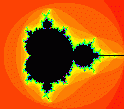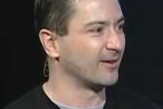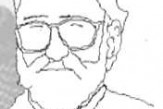brain imaging
Scicon Review
Conscious and nonconscious memory related brain activity
Are conscious and nonconscious processes supported by overlapping brain regions? In a recent study, Slotnick and Schacter investigated whether activity, related to visual memory, in early visual regions (BA17 and BA18) is refle...
Scicon Review
Visuo-spatial consciousness and parieto-occipital EEGs
Which brain areas are involved in visuospatial consciousness? In a recent study by Babiloni and colleagues, subjects performed a visual perception task. Interestingly, these scientists found that visual-evoked potentials at par...
Scicon Review
Inducing a dreamy state
Brain stimulation provides an interesting tool to study the functions of a given area of the brain. In a study by Vignal et al. published in Brain, artificial stimulation or seizures in specific mesial temporal lobe structures ...
Scicon Review
Functional neuroimaging in unconscious states
Steven Laureys and colleagues ask whether functional imaging methods such as fMRI and PET can be used to detect consciousness in individual patients. Recent studies have showed activation patterns in a vegetative patient that a...
Scicon Review
The impact of invisible stimuli
The more clear a stimulus is, the more distracting it can be. Or so you might think. In a recent Science publiation Tsushima et al. report that weak stimuli that are irrelevant to the task being performed—have a greater impac...
Scicon Review
Genetics of emotional regulation
The second most read article in TICS (see previous headline) is a review (PDF) of studies from imaging genetics, the study of how genes make up our minds, as we have described here at SCR. Ahmad Hariri and Andrew Holmes reviews...
Scicon Review
Pure Novelty Spurs The Brain
Neurobiologists have known that a novel environment sparks exploration and learning, but very little is known about whether the brain really prefers novelty as such. Rather, the major “novelty center” of the brain&#...
Scicon Review
Branding the brain
In a groundbreaking new study, researchers from the University of Michigan and Harvard University use cutting-edge brain-scanning technology to explore how different regions of the brain are activated when we think about certai...
Scicon Review
Self-movement in the brain
We are readily able to distinguish movement made by ourselves and those by others. A recent study in Neuroimage by Balslev et al. demonstrate that the brain networks underlying these two experiences are indeed very similar. Thi...
Scicon Review
Suppressing emotions
What happens when we suppress emotional thoughts or behaviour? In a study by Ohira and colleagues, it was shown that active suppression of emotions led to distinct patterns of activation. Areas activated in this PET study inclu...













